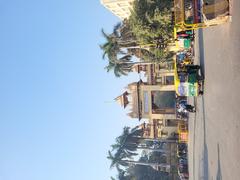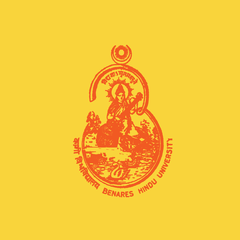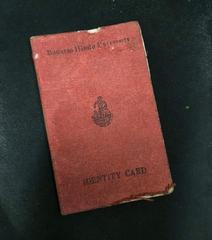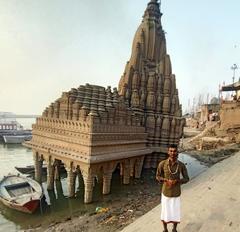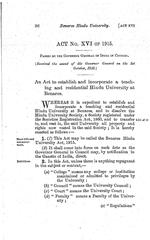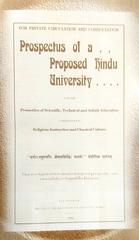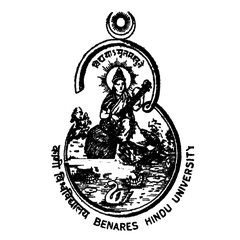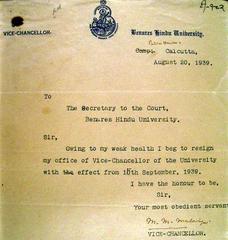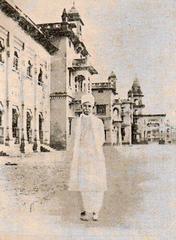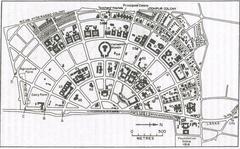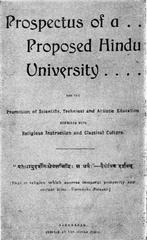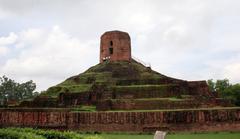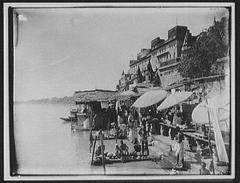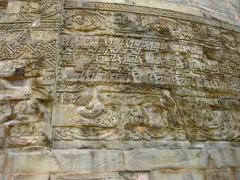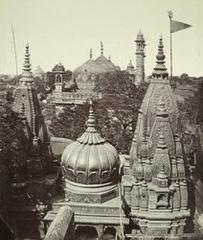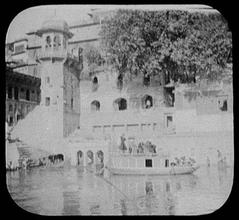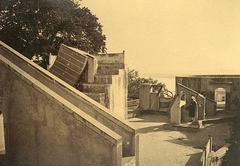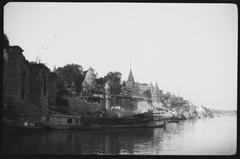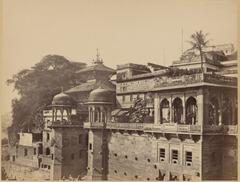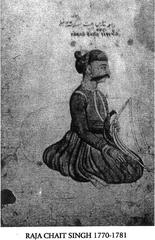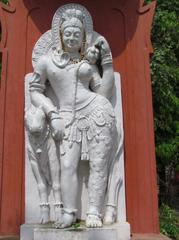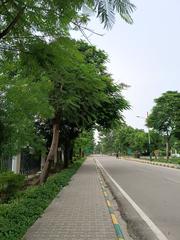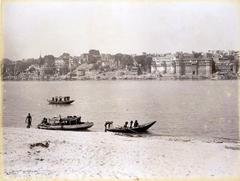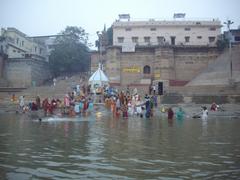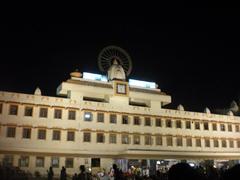
Banaras Hindu University Visiting Hours, Tickets, and Historical Significance in Varanasi
Date: 14/06/2025
Introduction
Banaras Hindu University (BHU), founded in 1916 by Pandit Madan Mohan Malaviya, stands as a beacon of academic excellence, cultural heritage, and spiritual significance in the heart of Varanasi. Spanning over 1,300 acres, BHU is not just a top-tier educational institution but also a vibrant living museum, blending Indo-Gothic and colonial architecture with serene green spaces and iconic temples. For visitors—whether scholars, tourists, or spiritual seekers—BHU offers an immersive gateway into India’s rich intellectual and cultural traditions.
This comprehensive guide provides essential insights on BHU’s history, campus attractions, visiting hours, ticketing details, accessibility, and nearby Varanasi sites. Whether you’re planning a brief campus tour or a deep dive into the university’s museums and temples, the following sections will help you make the most of your visit. For the latest updates, always refer to the official BHU website and trusted travel guides (EduFever, Tour My India).
Table of Contents
- Introduction
- BHU’s Historical and Cultural Legacy
- Visitor Information
- Top Attractions within BHU
- Suggested Itineraries
- Nearby Varanasi Historical Sites
- Practical Tips & FAQs
- Conclusion & Further Resources
BHU’s Historical and Cultural Legacy
Founding Vision and Development
BHU was envisioned by Pandit Madan Mohan Malaviya as an institution “by Indians and for Indians,” rooted in the synthesis of traditional Indian knowledge and modern scientific education. Its beginnings trace to the Central Hindu College, established in 1898 by Dr. Annie Besant, which later became the nucleus of the university. Over the decades, BHU has grown into one of Asia’s largest residential universities, with five institutes, 14 faculties, and over 140 departments.
Role in National Identity
BHU played a crucial role during India’s independence movement, serving as a center for nationalist thought and intellectual exchange. Today, the university continues to foster a spirit of academic innovation, cultural pride, and ethical growth, welcoming students and visitors from across India and the world.
Visitor Information
Visiting Hours & Entry Fees
- Campus Access: Open daily from sunrise to sunset (general hours: 8:00 AM to 6:00 PM).
- Bharat Kala Bhavan Museum: 10:30 AM – 4:30 PM (closed Saturdays and public holidays) (Trip.com).
- New Vishwanath Temple: Open all day, with special prayers during festivals.
- Entry Fees: Campus entry is free. Bharat Kala Bhavan Museum charges a nominal fee (approx. INR 20 for Indian nationals, INR 100–150 for foreign tourists).
Guided Tours & Accessibility
- Guided Tours: Available through the BHU visitor center and authorized travel agencies (EIndiaTourism).
- Audio Guides & Brochures: Often available at the museum and main entry points.
- Accessibility: Most major campus areas are wheelchair-friendly, with ramps and accessible restrooms. Visitors with special needs should contact the visitor center in advance.
How to Reach BHU
- By Rail: 7–10 km from Varanasi Junction railway station.
- By Air: 25–30 km from Lal Bahadur Shastri International Airport. Taxis and app-based cabs connect directly to the campus.
- By Road: Accessible via auto-rickshaws, taxis, and city buses; main entry at Lanka Gate.
Campus Facilities & Photography
- Facilities: Maps, restrooms, water stations, canteens, medical services (Sir Sunderlal Hospital), banks, ATMs, post offices, and guest houses (Careers360).
- Photography: Permitted in outdoor areas. Restrictions apply inside the museum and sacred sites; check for signage or consult staff.
Top Attractions within BHU
New Vishwanath Temple (Birla Mandir)
A modern marble marvel, this temple is modeled after the original Kashi Vishwanath Temple and is open to all faiths. Its soaring spire and intricate carvings offer a peaceful setting for reflection and panoramic campus views (BanarasTrip).
Bharat Kala Bhavan Museum
Located centrally, the museum houses over 100,000 artifacts, including rare miniature paintings, manuscripts, sculptures, and textiles. The “treasury room” is a highlight for art lovers (From Here to India; GuideTour).
Campus Architecture & Green Spaces
BHU’s semicircular layout features a harmonious mix of Indo-Gothic, colonial, and Islamic architectural styles. The campus is dotted with lush gardens and shaded avenues, providing tranquil spots for relaxation (Tour My India).
Cultural Festivals and Events
Annual events like “Spandan” and “Kashi Yatra” bring together music, dance, drama, and student-led cultural programs, reflecting Varanasi’s artistic vibrancy (Go Kite Tours; CollegesExplorer).
Suggested Itineraries
Half-Day Itinerary
- Enter via Lanka Gate.
- Visit New Vishwanath Temple.
- Explore Bharat Kala Bhavan Museum (1.5–2 hours).
- Stroll through campus gardens and historic faculty buildings.
- Lunch at a campus canteen or nearby café.
Full-Day Itinerary
- Follow the half-day plan in the morning.
- Visit additional academic buildings, the Botanical Garden, or amphitheater.
- Attend a cultural event or lecture if available.
- Walk through residential and student areas to experience campus life.
Nearby Varanasi Historical Sites
BHU’s strategic location makes it a perfect base to explore Varanasi’s famous spiritual and historical sites:
- Assi Ghat: 2–3 km, known for morning rituals and evening Ganga Aarti (Agoda).
- Bharat Mata Mandir: 3 km.
- Durga Temple: 4 km.
- Dashashwamedh Ghat: 6 km, site of the iconic evening Aarti (Wanderlog).
- Ramnagar Fort: 3 km, with a royal museum (India Itinerary).
- Sarnath: 10 km north, a key Buddhist pilgrimage site (Trip.com).
- Varanasi Silk Market: Ideal for Banarasi saree shopping (Agoda).
Practical Tips & FAQs
Tips for Visitors
- Dress Code: Modest attire (covering knees and shoulders) is advised, especially for temples (Travelogy India).
- Identification: Carry valid ID for security checks.
- Photography: Allowed outdoors, restricted in museums and temples.
- Weather: Best visited October–March; summers and monsoons can be challenging.
- Accessibility: Most major areas are accessible, but some older buildings may not be.
Frequently Asked Questions
Q: What are the BHU visiting hours?
A: General campus hours are 8:00 AM–6:00 PM; specific attractions may differ.
Q: Is there an entry fee?
A: Campus entry is free; museum charges a nominal fee.
Q: Are guided tours available?
A: Yes, through the visitor center or authorized agencies.
Q: How do I reach BHU from the airport?
A: Taxis and cabs are available for the 25–30 km journey.
Q: Is BHU wheelchair accessible?
A: Most key areas are accessible; contact the visitor center for assistance.
Conclusion
Banaras Hindu University is a living testament to the harmonious blend of India’s academic brilliance, cultural legacy, and spiritual depth. Its architectural grandeur, lush campus, vibrant festivals, and proximity to Varanasi’s holy sites make it a must-visit for anyone seeking to experience the essence of India’s heritage. For a seamless and enriching trip, consult the BHU official website, download the Audiala app for real-time updates and curated itineraries, and stay connected through social media.
Embark on your journey to BHU and explore the treasures of Varanasi—a city where tradition meets modernity, wisdom meets devotion, and every corner tells a story.


